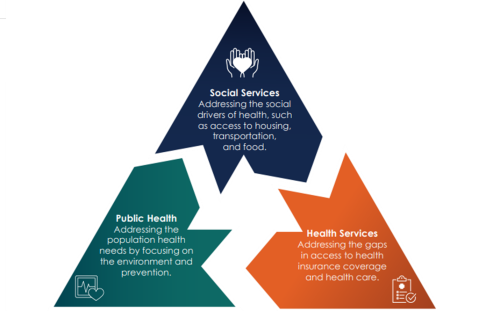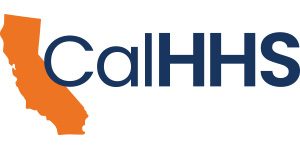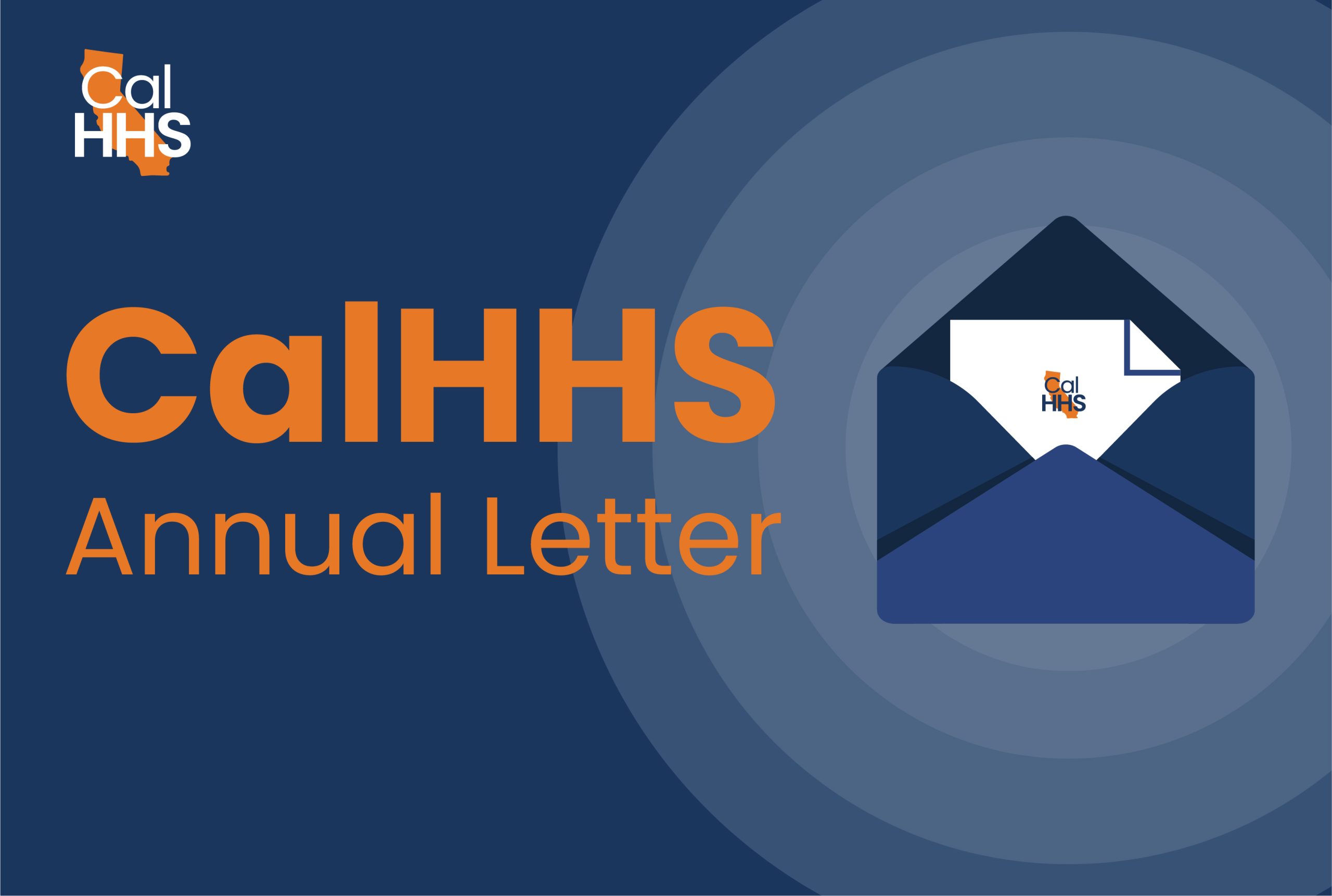Dear CalHHS Partners,
It has been another tremendous year within the departments and offices across the California Health & Human Services Agency (CalHHS). We are not only proud of what we have done together, with you, our valued community, and local partners, in 2022 but for how the work in 2022 complements and carries forward the arch of our vision and mission over the past four years. Although the work continues at a furious and appropriately urgent pace, I write to reflect, celebrate, and lift-up some parts of the work.
Impossible as it is to be comprehensive in mentioning all that we have done together, I want to emphasize two broad points. First, nothing happens without you, our partners. Good vision is empty without sound execution and iteration. Many of you contributed to our work through your participation in meetings, critiquing and improving our plans, and advocating for the ultimate approval of many initiatives and legislative proposals we have the honor to guide. Second, a Healthy California for All means that everyone, and I mean everyone, can see themselves in the work we do together. Anchoring our work in equity means ensuring that groups historically outside our work begin to have meaningful power over where our work goes from here and how we deliver systems of care. Our commitment is to continue to deepen our anchor in equity, creating more space for the power and voice of community to drive our work. For us to have a Healthy California for All, that is truly for all, we see no other way.
Over the past four years, CalHHS has grown by 42 percent in our annual budget with a host of new programs and initiatives underway. Just in 2022 alone, we assessed and provided technical assistance to nearly 480 legislative bills, of which, the Governor signed 168 into law, a testament that health services and human services are the core of our communities. Through the will of the Governor and the partnership with the Legislature, all parts of our organizations have grown in service of all Californians.
As we close out this year, I wanted to take a moment to express our collective thanks and gratitude to you, our partners. Together, we have accomplished much in 2022, but we have much more work ahead of us as we realize our vision of a Healthy California for All.
Responding to the COVID-19 Pandemic and other Infectious Disease Threats
Even in the face of a continued COVID-19 pandemic and new threats to public health, our collaborative work across health and human services allowed us to achieve historic milestones for California.
Together, we moved forward a nation-leading response to the pandemic: the SMARTER Plan. Built on our lessons learned over two years of responding to COVID-19, with a continued focus on the state’s commitment to equity, the SMARTER Plan has ensured our readiness, awareness, and flexibility in California’s pandemic response, as well as our response to MPOX this summer, and ongoing threat of multiple respiratory viruses circulating in our state today.
Now, with vaccines, updated boosters and treatments widely available, and the SMARTER Plan guiding our response efforts, California has the tools needed to continue fighting COVID-19 and many other threats that may emerge. As we transition to the next phase, preparing for the end of the State of Emergency, we will not let our guard down.
Together, we will continue to be ready for whatever comes next.
Improving Equitable Access to Behavioral Health Supports
This year, CalHHS began its work with counties and local leaders to implement the Community Assistance, Recovery and Empowerment (CARE) Act. CARE seeks to create a new pathway to deliver critical services, including medications, supports and housing, to vulnerable individuals suffering from under or untreated schizophrenia and other psychotic disorders.
We know that everyone is going through a hard time, especially in the fallout of the COVID-19 pandemic. Our success with moving forward the CARE Act only scratches the surface of the incredible work CalHHS has accomplished to improve access to behavioral health services that support all Californians in need.
2022 also brought a year of rapid implementation of several major initiatives to improve access, quality and equity in the delivery of behavioral health care in California. For Medi-Cal beneficiaries, CalAIM implementation at the Department of Health Care Services (DHCS) has supported a no wrong door approach to care, including payment reform and documentation redesign efforts that put the focus on outcomes while improving system accountability. Under CalAIM, enrollees will be able to access mental health and substance use disorder services quickly and easily, regardless of the delivery system where they initially seek care. For commercial beneficiaries, the Department of Managed Health Care (DMHC) is working to conduct focused investigations of commercial health plans to ensure that barriers to behavioral health care are identified and removed.
Moreover, 2022 was a year focused on planning efforts and implementation of initiatives to address gaps in the behavioral health care continuum, specifically the crisis care continuum. CalHHS began a statewide effort to set out a bold vision to build a crisis care continuum that ensures all Californians, regardless of where they live or their coverage type, can access essential crisis services including prevention, response, and stabilization services. The plan is being designed in concert with several critical initiatives launched by DHCS to build this crisis care system – including CalHOPE, 988 crisis center and mobile crisis response capacity, and over $2 billion in capital funding through the Behavioral Health Continuum Infrastructure Program to construct, acquire, and expand behavioral health treatment settings including crisis residential care and crisis stabilization units.
We also know our kids are continuing to struggle with their mental health. In 2022, we delved into planning, designing, and implementing the multiple components of the Children and Youth Behavioral Health Initiative (CYBHI) to take on the long-term, hard work of building systems that support the wellbeing of our kids and can provide early, coordinated services.
Hearing directly from youth and communities across the state about what they need to support their mental health and wellbeing as well as working with partners and experts across the behavioral health and education systems has been critical to shaping and driving forward the work of the CYBHI. Building a reimagined ecosystem of behavioral health services and supports that meets kids where they are–including a focus on wellbeing, prevention and early intervention that youth have told us they want and need–will ensure CalHHS, our departments, sister state agencies, and our partners in health and education can continue to work together with ongoing engagement with youth and families.
This work anchors the Governor’s Master Plan for Kids Mental Health, which is designed to be a whole-of-society plan to address the mental health needs of all of California’s children and youth.
Finally, as a country we are facing a fentanyl and opioid crisis. At CalHHS, we have focused on two big areas. First, reducing the likelihood of a bad outcome among individuals and groups who are established and known users, by providing test strips, naloxone, harm reduction, and education. Second, preventing the new and potentially addictive use by individuals, especially youth, who do not use now, by deploying broad education campaigns and youth-targeted campaigns, treating addiction in primary care, expanding the substance use disorder workforce.
Focusing on Housing as a Social Driver of Health
One of the key lessons of COVID-19 is that homelessness itself is a health issue. Throughout our response to COVID-19, we included a particular focus on housing as a tool to protect and improve the health and wellbeing of our homeless population. As we move forward, we are focused on combining housing with health and social services to serve the whole person.
Our departments and offices are integral to state efforts to prevent and end homelessness. 2022 brought important changes to the California Interagency Council on Homelessness (Cal ICH), including making CalHHS a co-chair of the Council alongside the Business Consumer Services and Housing Agency. New council members now include the Directors of the Departments of Social Services, Aging, Public Health, Rehabilitation, Health Care Services, and State Hospitals.
Cal ICH has created opportunities to work across the administration to integrate housing, health, and other supportive services for Californians who need it most. The Council, through its leadership and membership, has a tremendous opportunity to connect dots, bring people and programs together, so that the massive efforts to address the drivers and sequelae of homelessness can be better addressed. We believe, with clarity and resolve, that despite being a vexing challenge to our state, California cannot just move the needle but create a path toward a functional end to homelessness. It is not just a critical health issue, it is a critical health equity issue that we must continue to work to address.
The Department of Social Services (DSS) is implementing over $2 billion in funding allocated over the last two years to end homelessness for families, especially those who are recipients of CalWORKs or involved in the child welfare system and for older individuals and adults with disabilities through programs targeted toward helping people access benefits including Social Security Income and people who are connected to Adult Protective Services. By embedding housing solutions into the social services system, we can better meet the needs of the whole person.
Through CalAIM, DHCS is advancing our ability to address the social determinates of health, notably on the housing front. Medi-Cal managed care plans can now provide housing related community supports to their unhoused members including short-term post hospitalization, housing transition navigation services, and more.
Finally, we are investing $1.5 billion through our Behavioral Health Bridge Housing program to address the immediate housing and behavioral health treatment needs of people experiencing unsheltered homelessness.
Improving Quality of Care Across Systems to Deliver on Equity
Too often, we think about equity as only an issue of access to health care or health insurance coverage. Though equal access can result in unequal care.
When access to health care is inequitable, we know racial and ethnic minority populations tend to receive lower quality care compared to their white counterparts. Likewise, quality improvements that only focus on the overall population, and fail to address racial and ethnic differences, can and do result in unequal quality.
This year, across CalHHS, we focused on utilizing data to drive improved quality to drive us toward more equitable outcomes in our work.
First, with the goal of ensuring the equitable delivery of high-quality health care services for all enrollees, DMHC for the first time adopted a standard set of health equity and quality measures for health plans. For context, DMHC convened a Health Equity and Quality Committee of diverse experts including representatives of consumers, health plans, providers, government agencies and research entities. DMHC recently announced the measures, and all DMHC-licensed full service and behavioral health plans, including Medi-Cal managed care plans, will be required to start collecting data on the measures in 2023 and reporting these data to DMHC starting in 2024. DMHC will begin publishing a Health Equity and Quality Compliance Report on the data starting in 2025.
Second, as part of their annual release of quality performance scores, DHCS for the first time issued monetary sanctions on managed care plans who failed to meet required minimum performance levels. DHCS set a higher bar for quality performance in Medi-Cal managed care—increasing the minimum performance level from the 25th to 50th percentile—and now DHCS is taking action by levying monetary sanctions. Sanctions range from $25,000 to $437,000 based on various factors, including how many Medi-Cal members were impacted, the degree to which a managed care plan fell below a minimum performance level, and the degree of improvement or decline from the previous measurement year.
Most importantly, DHCS is requiring plans who are being sanctioned to take concrete action. All managed care plans failing to meet the minimum performance levels are required by January 31, 2023, to:
- Submit a revised comprehensive quality strategy, including new interventions designed to meet or exceed the required 2023 milestones.
- Detail how the plan intends to devote adequate resources and staff to quality improvements.
- Work closely with DHCS’ quality team on data-driven improvement efforts that will address disparities experienced throughout the state on an ongoing basis.
This approach to annual plan quality performance will be the vehicle to continuously assess the progress with implementing the DHCS Comprehensive Quality Strategy.
Finally, the Centers for Data Insights and Innovation (CDII) in July finalized our first-ever statewide Data Sharing Agreement, which we developed in partnership with stakeholders. The Data Sharing Agreement is the first step in our recently adopted California Health and Human Services Data Exchange Framework, which seeks to promote equity and expand access to whole-person care by accelerating and expanding the exchange of health and human services information among health care entities, government agencies, and social service programs beginning in 2024. This week, CDII announced the first round of awardees as part of a $50 million grant program. In this first round, a total of 13 partners will receive $3 million to provide education and outreach to organizations that are required to sign the Data Sharing Agreement by January 31, 2023.
Bridging Siloed Systems in 2023
Our focus in 2023 will be on further bridging the various systems—public health, health care services, and social services—in service of all Californians.
Our state’s diversity and longstanding commitment to innovation will continue to push CalHHS to bridge systems and utilize a whole-of-society approach that demonstrates how both at the individual level and the community level we can, and must, work together to truly build a Healthy California for All.

Bringing these siloed systems gives us the opportunity to not only deliver person-centered programs and service but ensure that we are breaking down the siloed structures of government in better service of Californians.
Most importantly, this work will allow us to build on prior year efforts to better serve vulnerable individuals and deliver on our vision of a Healthy California for All. Where every individual belongs to a strong and thriving community. Where all our children can play and learn, and where we are confident that we have done all we can to pass to them a state they can lead into the future. Where older and disabled Californians can live with purpose and dignity, and where they are supported and valued. Where we constantly pursue social and racial justice by not only lifting all boats but especially those boats that need to be lifted more. Where we prioritize prevention and the upstream factors that impact an individual’s health and well-being. Where we are committed to tackling the economic inequalities that force many Californians to live on the street. Where necessities like housing and childcare are complimented by access to physical and behavioral health services, and where programs and services address the social, cultural and linguistic needs of the individuals they serve.
Conclusion
Despite all we have accomplished in 2022, there is much more work to be done next year. We will have to test the bounds of our current partnerships and look to forge new, innovative partnerships that will deliver on our vision of a Healthy California for All.
I am hopeful and optimistic for our work together in the coming year.
On behalf of all of us at CalHHS, thank you for your partnership. With immense gratitude, we wish you, your families, and your communities all the best for a happy and healthy new year.
Arms linked,
Mark Ghaly, MD, MPH
Secretary


